Related Research Articles
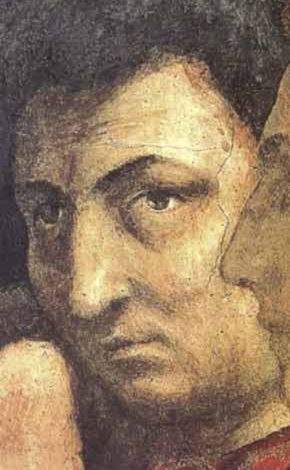
Masaccio, born Tommaso di Ser Giovanni di Simone, was a Florentine artist who is regarded as the first great Italian painter of the Quattrocento period of the Italian Renaissance. According to Vasari, Masaccio was the best painter of his generation because of his skill at imitating nature, recreating lifelike figures and movements as well as a convincing sense of three-dimensionality. He employed nudes and foreshortenings in his figures. This had seldom been done before him.

Andrea Mantegna was an Italian painter, a student of Roman archeology, and son-in-law of Jacopo Bellini.

The art of Europe, or Western art, encompasses the history of visual art in Europe. European prehistoric art started as mobile Upper Paleolithic rock and cave painting and petroglyph art and was characteristic of the period between the Paleolithic and the Iron Age. Written histories of European art often begin with the Aegean civilizations, dating from the 3rd millennium BC. However a consistent pattern of artistic development within Europe becomes clear only with Ancient Greek art, which was adopted and transformed by Rome and carried; with the Roman Empire, across much of Europe, North Africa and Western Asia.

Pietro Lorenzetti or Pietro Laurati was an Italian painter, active between c. 1306 and 1345. Together with his younger brother Ambrogio, he introduced naturalism into Sienese art. In their artistry and experiments with three-dimensional and spatial arrangements, the brothers foreshadowed the art of the Renaissance.
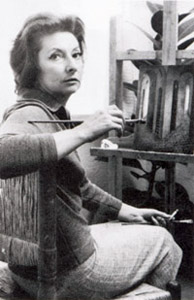
María de los Remedios Alicia Rodriga Varo y Uranga was a Spanish-born Mexican surrealist painter working in Spain, France, and Mexico.
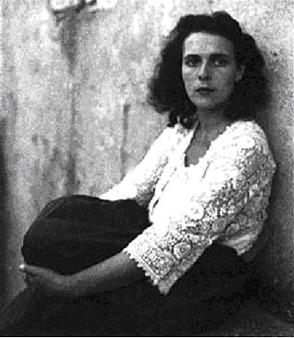
Mary Leonora Carrington was a British-born surrealist painter and novelist. She lived most of her adult life in Mexico City and was one of the last surviving participants in the surrealist movement of the 1930s. Carrington was also a founding member of the women's liberation movement in Mexico during the 1970s.

Sano di Pietro or Ansano di Pietro di Mencio (1405–1481) was an Italian painter of the Sienese school of painting. He was active for about half a century during the Quattrocento period, and his contemporaries included Giovanni di Paolo and Sassetta.
The Bay Area Figurative Movement was a mid-20th Century art movement made up of a group of artists in the San Francisco Bay Area who abandoned working in the prevailing style of Abstract Expressionism in favor of a return to figuration in painting during the 1950s and onward into the 1960s. Spanning two decades, this art movement is often broken down into three groups, or generations: the First Generation, the Bridge Generation, and the Second Generation.
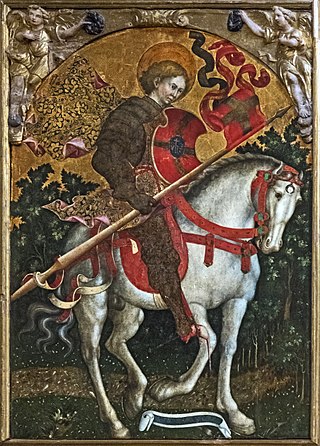
Michele Taddeo di Giovanni Bono, known as Giambono was an Italian painter, whose work reflected the International Gothic style with a Venetian influence. He designed the mosaics of the Birth of the Virgin and Presentation in the Temple. His best known paintings are the Man of Sorrows and the St. Peter.
Kerry James Marshall is an American artist and professor, known for his paintings of Black figures. He previously taught painting at the School of Art and Design at the University of Illinois at Chicago. In 2017, Marshall was included on the annual Time 100 list of the most influential people in the world. He was born and raised in Birmingham, Alabama, and moved in childhood to South Central Los Angeles. He has spent much of his career in Chicago, Illinois.

Primavera, is a large panel painting in tempera paint by the Italian Renaissance painter Sandro Botticelli made in the late 1470s or early 1480s. It has been described as "one of the most written about, and most controversial paintings in the world", and also "one of the most popular paintings in Western art".
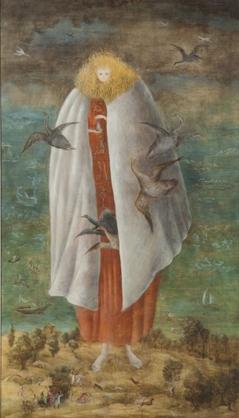
The Giantess (The Guardian of the Egg) is a painting by Leonora Carrington. The painting is considered one of her most famous works as it sold for almost $1.5 million in 2009. Carrington created The Giantess circa 1947 in Mexico City after becoming a resident of Mexico in 1942. The tempera on wood panel painting is 117 x 68 cm. The Giantess now resides in the private collection of Miguel S. Escobedo in Mexico.
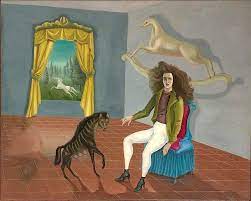
Self-Portrait is a painting executed by artist Leonora Carrington and is currently in the collection of the Metropolitan Museum of Art. She began the painting in London in 1937 and completed it in Paris in 1938. It is one of her most recognized works and has been called her "first truly Surrealist work." The presence of horses and Hyenas soon became a common feature in her work.

Christ Mocked is a small 13th-century panel painting by the Italian artist Cimabue, in tempera on a poplar panel. It depicts the Mocking of Jesus and is one of three panels known from a polyptych depicting the passion of Jesus. It was discovered in the kitchen of an elderly woman in Northern France. In October 2019 it sold at auction for €24 million, a record for a pre-1500 artwork. It is believed to be the first work by Cimabue to have been auctioned.
Tattoos and Shadows is a colour photograph created by Canadian photographer Jeff Wall in 2000. It was staged and inspired by a classical work of art, like others of his photographs. It is exhibited in a lightbox at the San Francisco Museum of Modern Art.

The Stoning of Stephen is a tempera and gold leaf painting by Philotheos Skoufos. Skoufos was active on the island of Crete. He traveled to Venice and eventually settled on the island Zakynthos. He was briefly a priest at the famous Greek church in Venice San Giorgio dei Greci. Nineteen of his works have survived. Skoufos created notable copies of Damaskinos's paintings namely The Stoning of Stephen and The Beheading of John the Baptist.

Christ the Vine is an egg tempera painting by Victor. Victor was a Cretan painter active during the 17th century. The painter traveled all over the Venetian empire. He eventually settled in Zakinthos. He is one of the most important painters of the 17th century due to the enormous amount of his existing works. His catalog of art exceeds over ninety-five paintings.
Christ Enthroned is a tempera icon by Emmanuel Tzanes, a Greek painter of the Late Cretan School. It is currently at the Byzantine & Christian Museum in Athens.
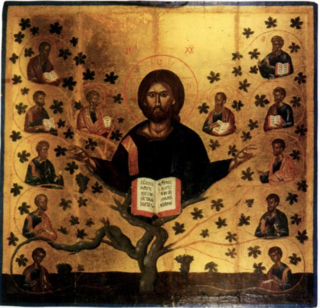
Christ the Vine is a tempera painting created by Greek painter Angelos. Angelos was active from 1425 to 1457. He was a teacher and protopsaltis. His students included some of the most famous painters of the early Cretan Renaissance. Andreas Pavias and Andreas Ritzos were his students and were heavily influenced by his style. Forty-nine of his works survived. Angelo’s Christ the Vine was one of his most important works.
Portrait of Max Ernst, also known as Bird Superior – Portrait of Max Ernst, is an oil on canvas painting by English artist Leonora Carrington, created c. 1939. The painting was made when the two artists were having a short-lived affair. It is held at the Scottish National Gallery of Modern Art, who purchased it in 2018. It was the first work by the artist acquired by the museum.
References
- ↑ The Kitchen Garden on the Eyot', San Francisco Museum of Modern Art
- ↑ The Kitchen Garden on the Eyot', San Francisco Museum of Modern Art
- ↑ Whitney Chadwick, “Pilgrimage to the Stars: Leonora Carrington and the Occult Tradition,” in Leonora Carrington, ed. Andrea Schlieker (London: Serpentine Gallery, 1991)
- ↑ The Kitchen Garden on the Eyot', San Francisco Museum of Modern Art